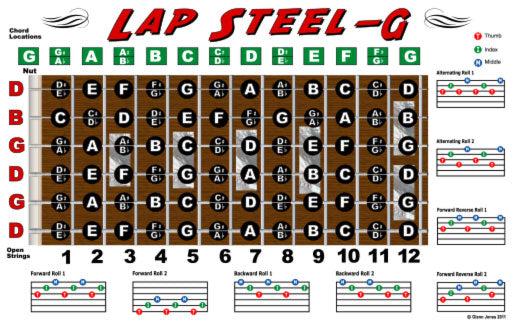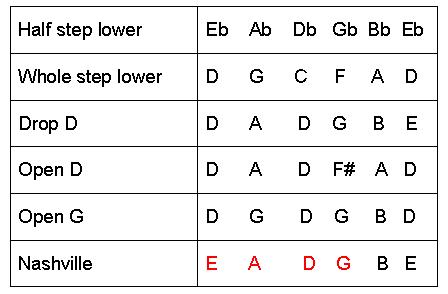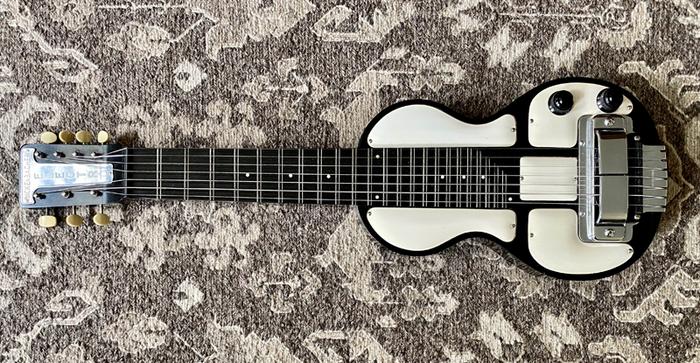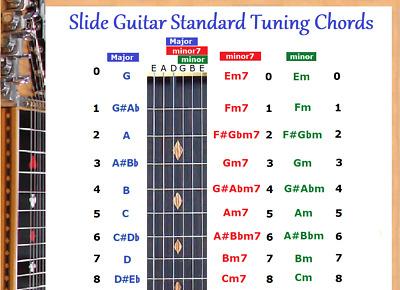Did you know that the very tuning of a lap steel guitar can transform your musical journey? This hidden power can seem elusive at first, but once unraveled, it opens a world of sonic possibilities. As someone with a background in contemporary improvisation, I’ve found these instruments to be unique canvases for expression, especially for beginners eager to explore a spectrum of sounds. Whether you’re just starting with the enchanting strains of Hawaiian melodies or the soulful wail of country slides, understanding lap steel guitar tuning is your key to unlocking these genres.
Embracing the right tunings can be the difference between sounding ordinary and extraordinary. Many beginners often wonder which tuning to start with, why it matters, and when to make changes along their musical discovery. This guide is crafted to demystify the process, offering you step-by-step instructions and insights into common pitfalls. So, let’s dive in and illuminate the path toward mastering your lap steel guitar.
What is Lap Steel Guitar Tuning?

Did you know that the tuning of a lap steel guitar significantly influences its tonal character and style of play? As a guitar educator, I’ve witnessed how understanding different tunings allows players to unlock a wider range of expressive possibilities on the lap steel guitar. This fascinating instrument offers a distinct sound that captivates musicians and audiences alike. The tuning is a major determinant of these lap steel guitar sounds, affecting everything from tonal brightness to harmonic resonance.
Unlike a regular guitar, where standard tuning is often applied universally, the lap steel guitar requires a thoughtful approach to tuning selection. The strings are tuned to create specific intervals that are conducive to slide techniques and can explore genres ranging from Hawaiian to blues. Each tuning molds the instrument’s voice, providing players with unique palettes to express their musical ideas.
Understanding the multitude of tuning options available is essential for any lap steel player, particularly beginners who are eager to delve into the diversity this instrument offers. In the coming sections, we’ll delve deeper into the intricacies of why certain tunings are favored over others and how they can affect the playability and overall sound of your lap steel guitar.
Why Choose Specific Tunings?
Benefits of Specific Tunings

Choosing the right tuning isn’t just a preference—it can be the gateway to mastering unique styles and techniques. In my years of teaching, I’ve found that selecting the right tuning not only enhances playability but also enriches the learning experience for new musicians. So, why choose specific tunings when learning the lap steel guitar? Each tuning unlocks a different realm of musical possibilities, offering distinct tonal qualities and facilitating certain tuning techniques that foster creativity and improvisation.
For beginners, embracing the relevance of specific tunings can significantly accelerate the learning curve. Open tunings, for instance, simplify chord formation, allowing students to explore harmonies and melodies with ease. Customized tunings cater to various genres—from Hawaiian to blues—expanding musical repertoire early on. In my experience, the strategic choice of tuning can empower students to tackle diverse styles within their lap steel guitar lessons, paving the way to a richer, more versatile playing journey.
Understanding these tuning benefits is why I emphasize them from the outset, ensuring a robust foundation for continuous musical growth. As we delve further into specific beginner-friendly tunings, observe how these choices impact your sound and technique.
Which Tunings Should Beginners Use?

Is there a ‘best’ tuning for beginners, or do different paths lead to the same musical destination? Through my own journey with the lap steel guitar, I’ve found that starting with accessible and popular tunings helps build confidence as players explore improvisation. This question lingered in my mind when I first picked up the instrument, and I learned that the answer is both simple and incredibly personal.
For many budding musicians, C6 tuning stands out as a favored choice. It offers a versatile harmonic range that’s perfect for both Hawaiian and Western swing music. The rich, full chords of C6 can awaken creative avenues in your playing, allowing for expressive melodies that intrigue the ear. But perhaps you’re more inclined towards a resonant, bluesy vibe. In that case, G tuning might be your ideal match. It lends itself beautifully to open-position playing and slide techniques, creating a sound that resonates deeply in American roots music.
Still, some may find solace in the reliable and bold voice of open E tuning. Known for its prominence in rock and blues, open E allows your slide to easily navigate the fretboard, transforming your lap steel into a powerful extension of your musical expression. My experiences have taught me that these different tunings are like varied trails on the same mountain, each offering unique vistas and learning opportunities. Ultimately, the ‘best’ tuning is the one that resonates with you and encourages your exploration and growth.
When to Change Tunings?
Situations for Tuning Adjustments

Have you ever experienced a moment in music where a slight change in tuning transformed the entire feel of a performance? This is the power of tuning adjustments. Understanding when to change tunings is essential, especially for lap steel guitar. Being attuned to your musical context is vital. I’ve often changed tunings based on performance needs, which drastically alters the event’s emotional impact. The decision might hinge on whether you’re playing an acoustic vs electric lap steel, as each has distinct sound qualities and tuning preferences. Utilizing a tuning chart helps pinpoint the most effective tuning adjustments for various styles. This adaptability not only enriches your musical palette but also enhances audience connection, making every performance uniquely memorable.
How to Tune Your Lap Steel Guitar?
Step-by-Step Tuning Guide

Could mastering the tuning process be the first step toward tackling more complex lap steel techniques? As a seasoned instructor with several instructional books under my belt, I can confidently assert that starting with a step-by-step tuning guide can be transformative. This approach not only demystifies the tuning process but also instills a profound sense of accomplishment in beginners.
In the realm of lap steel guitar lessons, understanding how to tune your instrument is fundamental. With a well-organized tuning chart, you’ll gradually become more comfortable transitioning between tunings, setting you up for more advanced techniques. My step-by-step guide is crafted to be comprehensive yet accessible, ensuring you navigate the learning curve with ease. By following these structured steps, you’ll build a solid foundation in tuning, which will serve as a crucial asset as you explore the full potential of the lap steel guitar.
As you gain confidence, this guide will seamlessly transition you to understanding common tuning errors, helping to refine your skills further. Let’s delve into each step and start this exciting musical journey together.
Common Tuning Mistakes to Avoid

What if the key to enjoying your lap steel playing lies in avoiding just a few common pitfalls? In my teaching, addressing common mistakes early on can prevent frustration and build a strong foundation for new players. As we delve into the nuances under ‘How to Tune Your Lap Steel Guitar?’, understanding these *common tuning mistakes* is crucial for improvement. One of the biggest errors I see among **beginner lap steel guitar** players is neglecting the appropriate use of an electronic tuner. Relying solely on your ear might seem appealing, but with unique **tuning techniques**, it’s essential to trust precision.
Another frequent stumble is tuning with the wrong reference pitch. Always ensure you have a **440 Hz reference** to keep your pitches accurate. Lastly, don’t ignore the subtle difference that *string tension* can make; it often leads to unwelcome detuning. By sidestepping these mistakes, your journey with the lap steel will be filled with harmonious progress, integrating seamlessly with the skills you’ll find in our comprehensive Step-by-Step Tuning Guide.
FAQs
What is the best tuning for a beginner lap steel guitarist?
How do I tune my lap steel guitar to Open D?
Can I use a regular guitar tuner for lap steel guitar tuning?
What is C6 tuning and why is it popular?
Conclusion
As you embark on your lap steel guitar journey, are you ready to explore the transformative power of tuning? The choices you make in selecting tunings will profoundly shape your musical exploration and expression. I have provided a comprehensive roadmap through the essential ‘what’, ‘why’, and ‘how’ of lap steel guitar tuning, focusing on empowering beginners with varied tuning resources. Whether you’re experimenting with open tunings for that rich, resonant sound or precision tuning to match specific genres, each option opens a new door of musical creativity.
In closing, my insights into tuning reflect years of dedicated practice and a passion for sharing knowledge with aspiring musicians. My hope is that these guides enable you to become confident and adventurous in your musical journey, beyond just technical competence. By understanding when and why to adjust your tunings, along with common pitfalls to avoid, you’ll find that you’re not just playing the instrument, but allowing it to become an extension of your personal expression.

